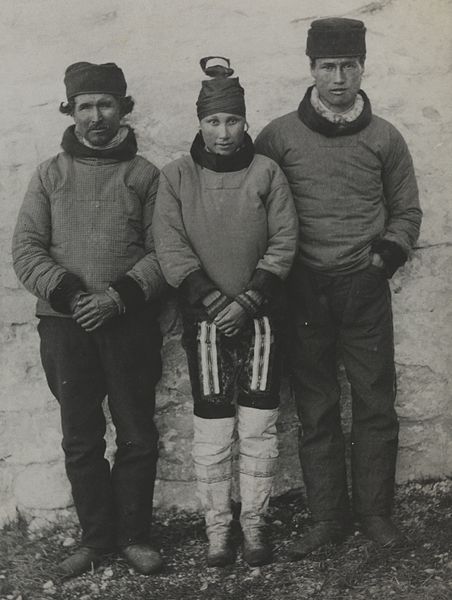Victoria Kakuktinniq is a Canadian Inuk fashion designer from Nunavut. Under her label Victoria's Arctic Fashion, Kakuktinniq hand-stitches clothing such as parkas, kamiit, and other accessories. Her work has been described as a major influence in contemporary Inuit fashion. Kakuktinniq has described her work as a means of preserving Inuit traditional skills of sewing and clothing production, which has historically been a significant aspect of Inuit culture. In particular, she advocates for handmade fur garments as sustainable fashion.
Modern women's parka by Victoria Kakuktinniq, 2021. The body is synthetic waterproof fabric, with silver fox fur trim on the hood and sealskin trim on the hem and cuffs. The curved hem is typical of the traditional amauti.
History of Inuit clothing
Archaeological evidence indicates that the use of Inuit clothing extends far back into prehistory, with significant evidence to indicate that its basic structure has changed little since. The clothing systems of all Arctic peoples are similar, and evidence in the form of tools and carved figurines indicates that these systems may have originated in Siberia as early as 22,000 BCE, and in northern Canada and Greenland as early as 2500 BCE. Pieces of garments found at archaeological sites, dated to approximately 1000 to 1600 CE, are very similar to garments from the 17th to mid-20th centuries, which confirms consistency in the construction of Inuit clothing over centuries.
Sealskin woman's parka discovered at Qilakitsoq in 1972, dated to c. 1475.
Watercolor painting of Inuk man known as Kalicho, by John White c. 1577
Group of Inuit in Greenland wearing cloth garments, c. 1888–1889.
Promotional photograph of polar explorer Robert Peary on the deck of steamship Roosevelt, 1909





